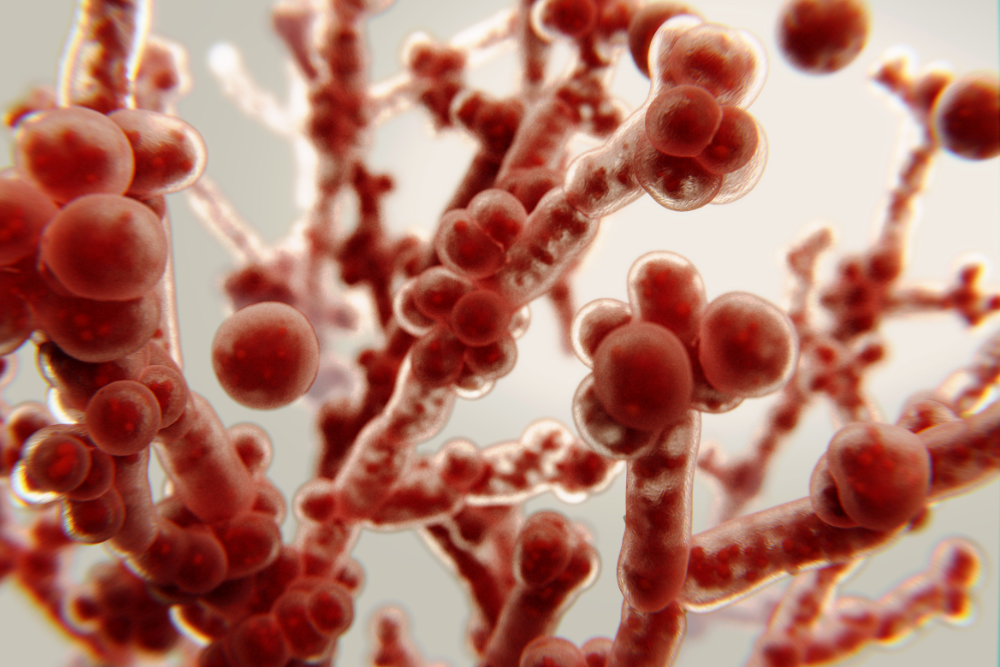Dealing with a vaginal yeast infection, or vaginal candidiasis, can be both uncomfortable and a bit overwhelming. This common fungal infection often brings a mix of symptoms that can disrupt your daily life. However, understanding what a yeast infection is, why it occurs, and how to effectively treat it can empower you to handle it with confidence and ease.
This comprehensive guide delves into the causes of yeast infections and provides step-by-step treatment strategies. Whether experiencing your first infection or seeking new methods to manage recurrent yeast infections, you’ll have the knowledge and tools to regain comfort and well-being.
What is a Yeast Infection?
A yeast infection, specifically a vaginal yeast infection, is a common condition caused by the fungus Candida albicans.¹ It’s important to note that while yeast infections can be uncomfortable, they are not classified as sexually transmitted infections (STIs). Here are the key aspects of vaginal yeast infections:
Candida Albicans: This is the primary fungus responsible for yeast infections. While Candida species are commonly found in small amounts in the vagina, an overgrowth can lead to an infection.¹
Symptoms: Common symptoms include itching or burning around the vulva. They may also include a thick, white or creamy vaginal discharge (cottage cheese-like), pain or discomfort during sex, a stinging sensation when urinating, swelling or redness around the vulva and vagina, and splits in the skin of the vulva.¹
Risk Factors: Factors that may increase the likelihood of thrush include taking antibiotics, pregnancy or breastfeeding, other health conditions like diabetes or immune system disorders, taking certain medications like the combined oral contraceptive pill, and having vulval skin conditions.¹
Not a Sexually Transmitted Infection: While yeast infections are not sexually transmitted infections, sexual activity can sometimes lead to or exacerbate them. It’s a misconception that they are a direct result of sexual activity.

Over-the-Counter Options for Treating Yeast Infections
Treating a yeast infection can be straightforward with the help of various over-the-counter (OTC) options. These treatments, available at local and online pharmacies, offer effective relief from the symptoms of yeast infections. Here’s an overview of the types of OTC solutions you can find to treat vaginal yeast infections:
Antifungal Creams, Ointments, and Pessaries
These products typically contain antifungal agents that are effective in treating most vaginal yeast infections. They are formulated as vaginal creams, ointments, or pessaries (a tablet that inserts into the vagina).¹
The length of treatment varies depending on the treatment used and the severity of the infection, however, treatment time can range from 1 to 6 days.¹ It’s essential to complete the full course of treatment prescribed by your healthcare provider to reduce the risk of recurrent thrush infection.
Important Considerations
Accurate Diagnosis: It’s important to confirm that your symptoms are due to a yeast infection, as other conditions might cause similar symptoms.
Following Directions: Ensure you follow the usage directions of any product, completing the course as recommended.
Professional Consultation: If yeast infection symptoms do not improve with OTC treatment or if you frequently experience yeast infections, seeking advice from a healthcare professional is advisable.

Lifestyle Changes to Prevent and Manage Yeast Infections
While over-the-counter treatments effectively treat yeast infections, incorporating certain lifestyle changes can significantly reduce the risk of developing them and aid in quicker recovery. Here’s a guide to lifestyle changes that can help in preventing and managing yeast infections:
Maintaining Good Hygiene
Regular Cleansing: Gently clean the genital area regularly. Avoid harsh soaps or shower gels; opt for mild, unscented products.
Dryness is Key: Moisture is a breeding ground for yeast. After bathing or swimming, make sure to dry the genital area thoroughly.
Clothing Choices
Breathable Fabrics: Wear underwear made from natural, breathable fabrics like cotton. This helps keep the area dry and reduces moisture buildup.
Avoid Tight Clothing: Tight pants, leggings, or underwear can increase heat and moisture in the genital area, creating an environment conducive to yeast growth.
Dietary Adjustments
Probiotics: Incorporating probiotic-rich foods like yoghurt, kefir, and fermented foods can help balance the body’s natural flora.
Limit Sugar Intake: High sugar levels can promote yeast growth. Reducing sugar and refined carbohydrates in your diet may help.
Managing Stress
Relaxation Techniques: High stress levels can affect your body’s immune response. Practices like meditation, yoga, or regular exercise can help manage stress effectively.
Sexual Health
Protection During Intercourse: Using condoms can prevent the spread of infections that can disrupt the natural balance of bacteria and yeast.
Lubricants: Opt for water-based lubricants during sexual activity, as some lubricants can cause irritation or alter the pH balance of the vagina.
Avoiding Certain Products
Feminine Sprays and Douches: Avoid using scented feminine hygiene products, sprays, or douches, as they can disrupt the natural balance of bacteria and yeast in the vagina.
Personalised Approach
Individual Needs: Each person’s body is different. What works for one might not work for another, so it’s essential to understand your body and how it reacts to different changes.
By implementing these lifestyle changes, you can create an environment less conducive to yeast infections, thereby reducing their frequency and aiding in quicker recovery when they do occur. Remember, if you frequently experience yeast infections or if lifestyle changes and OTC treatments don’t seem to help, it’s important to consult a healthcare professional for personalised advice.

When to Seek Medical Advice
Untreated vaginal thrush can lead to ongoing vulval discomfort. It might also cause small breaks in the skin of your vulva, which may get infected.¹
Recognising the signs of thrush and understanding when to seek professional help is key to ensuring your health and well-being. It’s always better to err on the side of caution and consult a healthcare professional if you’re uncertain or concerned about your symptoms.
Dealing with thrush? Start your hub.health consult today!
Source
- Healthdirect. Vaginal thrush [Internet]. Sydney (Australia): Healthdirect Australia; 2023 [cited 2024 Jun 14]. Available from: https://www.healthdirect.gov.au/vaginal-thrush





